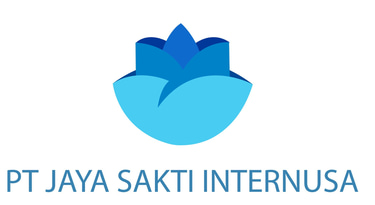Electrodeionisation (EDI): Revolutionary Technology for Producing Ultra-Pure Water
In the world of water treatment, especially for very high standards, Electrodeionisation (EDI) has become a mainstay. This technology combines the advantages of ion exchange and electrodialysis to produce highly pure water in a sustainable and environmentally friendly manner.
What is Electrodeionisation (EDI)?
Electrodeionisation (EDI) is a water purification process that uses electricity (electro-) and ion exchange resin (-deionisation) to remove dissolved ions from water. What sets it apart from conventional demineralisation is its ability to regenerate continuously without the need for acidic and caustic chemicals that are harmful to the environment.
In short, EDI is an ultra-pure water ‘technology’ that operates continuously without interruption for regeneration.
How Does It Work?
Imagine an EDI module as a smart ‘sandwich’ consisting of electrodes, membranes, and resin-filled chambers.
Water Flow Stage: Water that has undergone pretreatment (usually from a Reverse Osmosis/RO unit) is fed into several special chambers within the EDI module.
Ion Capture Stage: Inside these chambers is ion exchange resin. As water passes through the resin, contaminant ions (such as calcium, magnesium, chloride, sulphate) are attracted to and adhere to the resin surface.
Electrical Ion Removal Stage: Direct current (DC) is passed through electrodes at both ends of the module. This electric field creates a force that attracts the ions trapped in the resin.
Positive ions (cations) are drawn towards the cathode (-).
Negative ions (anions) are drawn towards the anode (+).
Disposal Stage: These moving ions then pass through a selective semi-permeable membrane. This membrane only allows ions with a certain charge to pass through and traps them in a special chamber called the concentrate chamber. A continuous flow of water flushes these concentrated ions into the drain.
Automatic Regeneration: The real magic happens here. The continuous electric field not only repels ions, but also breaks down water molecules (H₂O) into H⁺ and OH⁻ ions. These ions continuously regenerate the resin, replacing the dirty ions that have been removed. This process occurs continuously, so the resin is always ‘fresh’ and ready to capture new ions.
The output is two streams of water:
Product Water: Water that has been purified to a very high level of purity (up to 18.2 MΩ.cm).
Reject Water (Concentrate Stream): Water containing concentrated ions that is discharged to the drain.
When to Use an EDI System?
EDI is not a technology for all applications. Its use is most appropriate for:
Industries that Require Ultrapure Water:
Pharmaceutical & Biotechnology Industries: For the manufacture of medicines, injections, and cell media where mineral-free and pyrogen-free water is absolutely necessary.
Steam Power Plants: For filling high-pressure and supercritical boilers where even the smallest amount of scale can cause catastrophic system failure.
Semiconductor & Electronics Industry: For rinsing silicon chips where even microscopic particles can damage circuits.
Research Laboratories: For analytical equipment such as HPLC, GC-MS, and spectroscopy that require the highest level of purity.
When Sustainability and Safety are a Priority:
Companies that want to eliminate the storage, handling, and use of hazardous caustic and acidic chemicals for resin regeneration.
Continuous and Stable Water Demand:
Facilities that operate 24/7 and cannot stop for chemical regeneration processes such as in conventional mixed bed demin plants.
What are the Advantages of Using an EDI System?
Chemical-Free:
The biggest advantage. Eliminates the cost of purchasing, storing, and handling acids and caustics. It also improves workplace safety and is environmentally friendly.
Sustainable and Continuous Operation:
No downtime for regeneration. The system can produce ultra-pure water non-stop 24 hours a day.
Easy and Automated Operation:
The system is almost fully automated. Once set up and running, it only requires periodic monitoring, saving operator labour.
Consistency and Reliability of Water Quality:
Produces highly stable and consistent water quality due to the continuous regeneration process.
Lower Long-Term Operating Costs:
Although the initial investment cost may be higher, the elimination of chemical, labour, and chemical waste treatment costs results in a lower Total Cost of Ownership (TCO) over time.
Environmentally Friendly:
The only waste produced is concentrated reject water, not hazardous chemical waste that requires special handling.
Conclusion:
EDI is an advanced technology option for applications that demand ultra-pure water in a sustainable, safe, and environmentally friendly manner. If your requirement is for the highest purity water for critical processes, and you want to avoid the complexity and risks of using chemicals, then EDI is the right investment for long-term efficiency and sustainability.
